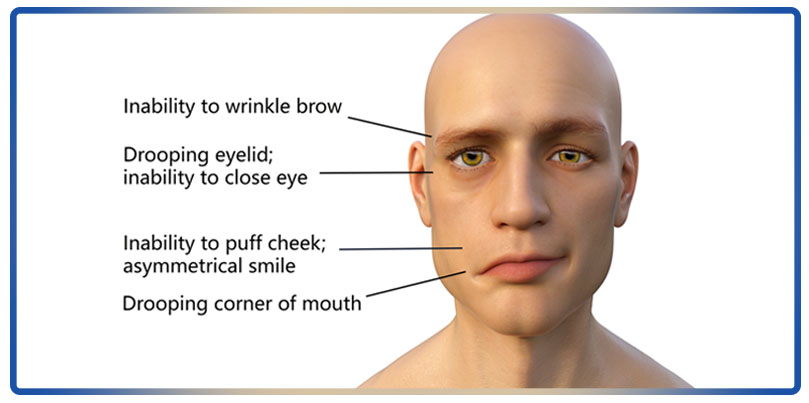Winter is here and also a season of Viral infection! Being a Neuromuscular Physiotherapist, I have come across few cases of Facial muscle weakness and Asymmetry. What is this Facial Asymmetry?
It is known as BELL’S PALSY.
Bell’s palsy is an unexplained episode of facial muscle weakness or paralysis. It begins suddenly and worsens over 48 hours. This condition results from damage to the facial nerve (the 7th cranial nerve). Pain and discomfort usually occur on one side of the face or head.
Bell’s palsy can strike anyone at any age. Bell’s palsy affects men and woman equally. It is less common before age 15 or after age 60.
Causes of Bell’s Palsy:
The cause of Bell’s palsy is not known. It is thought that it may be due to inflammation that is directed by the body’s immune system against the nerve controlling movement of the face. Bell’s palsy is sometimes associated with the following:
- Influenza, a cold, or another upper respiratory ailment.
- Diabetes
- High Blood pressure
- Infection, especially following a viral infection with Herpes simplex virus (a virus that is related to the cause of the common “cold sores” of the mouth)
- Myasthenia Gravis
- Multiple Sclerosis
- Lyme Disease
Symptoms of Bell’s Palsy:
These are the most common symptoms of Bell’s palsy:
- Disordered movement of the muscles that control facial expressions, such as smiling, squinting, blinking, or closing the eyelid
- Loss of feeling in the face
- Headache
- Tearing
- Drooling
- Loss of the sense of taste on the front two-thirds of the tongue
- Hypersensitivity to sound in the affected ear (hyperacusis)
- Inability to close the eye on the affected side of the face
The symptoms of Bell’s palsy may look like other conditions or medical problems. Always see your healthcare provider for a diagnosis.
Treatment:
Bell’s palsy usually starts to improve in 2 weeks but may take 3 to 6 months to return to normal. Along with the prescribed medications from your healthcare provider, Physical Therapy plays a vital role in the recovery of facial palsy.
Home treatment
- an eye patch (for your dry eye)
- a warm, moist towel over your face to relieve pain
- facial massage
- physical therapy exercises to stimulate your facial muscles




